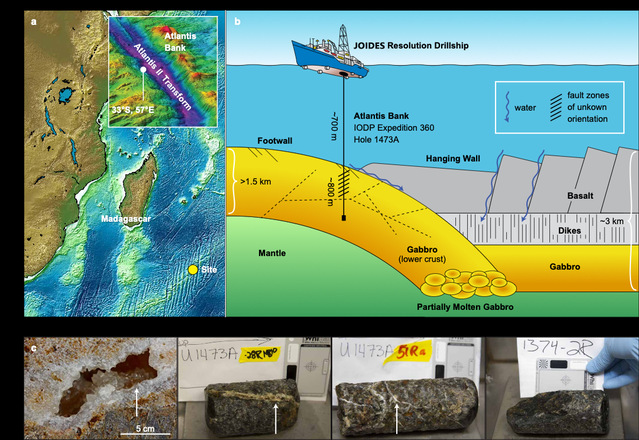Jiangtao Li1,2,9, Paraskevi Mara2,9, Florence Schubotz3,4, Jason B. Sylvan5, Gaëtan Burgaud6, Frieder Klein7, David Beaudoin2, Shu Ying Wee5, Henry J. B. Dick2, Sarah Lott2, Rebecca Cox2, Lara A. E. Meyer3,4, Maxence Quémener6, Donna K. Blackman8 & Virginia P. Edgcomb2,9 *
1 State Key Laboratory of Marine Geology, Tongji University, Shanghai, China.
2 Department of Geology and Geophysics, Woods Hole Oceanographic Institution, Woods Hole, MA, USA.
3 MARUM, University of Bremen, Bremen, Germany.
4 Department of Geosciences, University of Bremen, Bremen, Germany.
5 Department of Oceanography, Texas A&M University, College Station, TX, USA.
6 Université de Brest, EA 3882, Laboratoire Universitaire de Biodiversité et Ecologie Microbienne, ESIAB, Technopôle Brest-Iroise, Plouzané, France.
7 Department of Marine Chemistry and Geochemistry, Woods Hole Oceanographic Institution, Woods Hole, MA, USA.
8 Scripps Institution of Oceanography, University of California San Diego, La Jolla, CA, USA.
9 These authors contributed equally: Jiangtao Li, Paraskevi Mara, Virginia P. Edgcomb.
Abstract
The lithified lower oceanic crust is one of Earth’s last biological frontiers as it is difficult to access. It is challenging for microbiota that live in marine subsurface sediments or igneous basement to obtain sufficient carbon resources and energy to support growthhttps://www.nature.com/articles/s41586-020-2075-5



